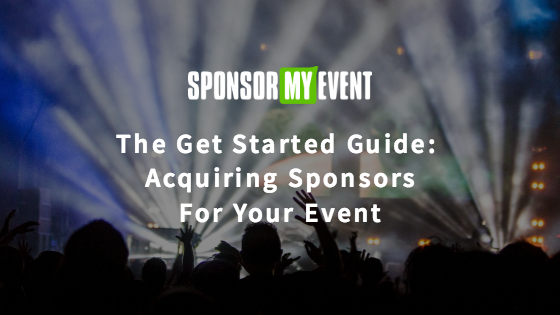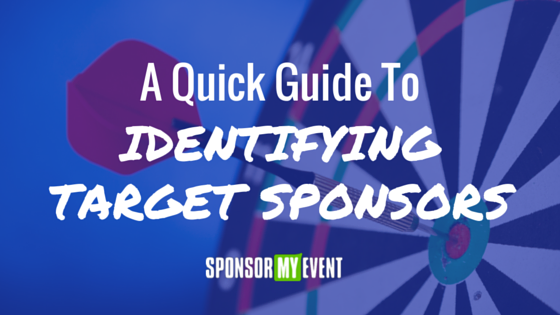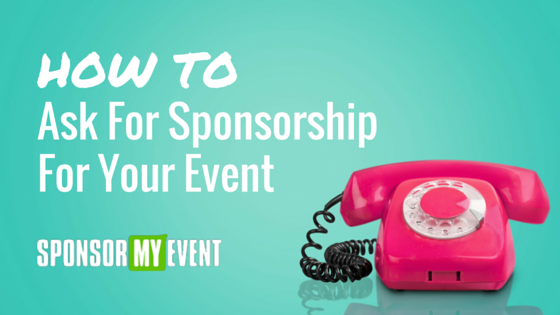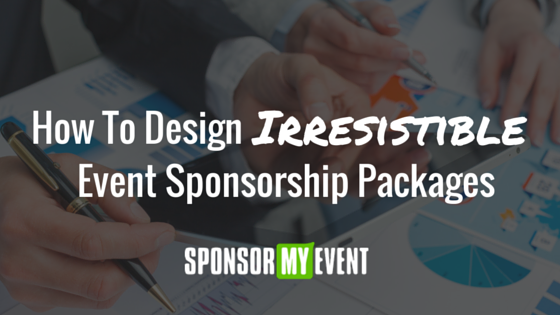
Whether you’re planning a usergroup event for a startup, an endurance race competition or an annual fundraiser for a nonprofit, you’ll almost certainly need sponsors regardless of what type of event you’re hosting. Sponsors can bring cachet to your event, help offset costs and even help drive registration or attendance. But where can you find them? How can you convince them that sponsoring your event will be a worthy line item in their budget?
Identifying Personas And Creating A Sponsorship Plan
The first step toward sponsor acquisition is to create a plan with multiple approaches to connect with sponsors. The plan will function as a game plan after you’ve considered all of the possible routes you can take to connect with sponsors. Instead of chasing after anyone with a checkbook, you’ll be able to methodically and efficiently make the most of your time and resources so that you can connect with highest number of ideal prospective sponsors.
Step one of your sponsorship acquisition plan is to identify sponsors’ personas. That is, to come up with a list of examples of companies that might be good sponsors for your event. And in order to do this, you’ll have to determine what a good sponsor is. The answer to “what makes a good sponsor for my event?” will vary tremendously by the nature of your event, your organization and your objectives. The “right” answer can only come from you and what you know to be best for your event. However, honing in on the correct personas to target is absolutely essential because if you spend too much time focused on prospective sponsors who aren’t likely to become sponsors, you’ll lose out on those that could. The other reason it’s absolutely vital that you are clear on who you should be targeting is that when you do start to approach prospective sponsors, you’ll need to make sure that your ‘pitch’ is correct: that you are able to connect your event and sponsorship packages with a very real reason (that resonates with that individual) as to why that prospective sponsor should pony up the funds to become one of your sponsors.
A few things to consider when identifying sponsor personas:
- What types of companies share an audience with your event? These are often your best bet for sponsors.
- How significant of an investment are you looking for from event sponsors? Depending on how your sponsorship packages are priced, you may need to focus on smaller or larger companies. National brands may be less likely to make a small investment but can also be much harder to “land” as sponsors. And on the flip side, smaller or local businesses may not have significant funds earmarked for event sponsorship and may be more open to a less substantial investment.
- What are the specific roles that you should target at your prospective sponsors? Is it a small business owner or someone from the marketing team? A good rule of thumb is that the more “corporate” a prospective sponsor is, the more likely you’ll want to approach the marketing organization.
Designing Your Sponsorship Campaign
Now that you’ve identified your target personas, the next step is to design a sponsorship campaign. Very similar to a marketing campaign, you’ll want to consider using multiple channels to reach out to prospective sponsors. Here are a few channels you can incorporate into your campaign:
Cold outreach via 1:1 email or Linkedin
- Email marketing (if you have a large enough list)
- Social media
- Advertising
- Partnerships with other events/organizations who can promote your event to their audiences
- SponsorMyEvent, our marketplace for connecting event organizers and sponsors
Develop Your Sponsorship Messaging
In order to leverage these channels, you’ll need to develop your message. (This is starting to sound quite a bit like a marketing campaign, isn’t it?) Your “message” is a combination of information about your event and its audience, why your prospective sponsors should sponsor your event and what they can expect as a return from doing so. It’s essentially a combination of education and a sales pitch. The key to creating strong messaging is to always come back to the same question: why is what I’m selling (sponsorship of my event) going to benefit the person that I’m trying to sell it to?
For event sponsors, you need to zero in on what it is about sponsoring your event will truly resonate with your prospective sponsor. For corporate events, that reason might be that your event could help sponsors increase their own audience and drive new business through awareness. For nonprofit or fundraiser events, it could be that your sponsors are committed to corporate and community stewardship and they want to give back to their community. For competitive running events, it’s likely that sponsors want to build awareness of their own brands so that your event’s participants (the runners) will purchase their product in the future. Connecting the “why” of your event’s sponsorship is the most important thing you can do. The second most important thing is the “how” — that is, how you will surface the perceived benefit of sponsorship so that your prospective sponsors quickly and clearly understand why they should consider sponsoring your event.
Once you’ve locked in your messaging, you’ll want to create an event sponsorship prospectus. This should essentially be a well-written, well-designed document that you can share with prospective event sponsors. It should provide them with a high level overview of your event, its attendees or guests and then a menu of sponsorship options. The options themselves should be easy to understand with very clear benefits and pricing. At the end of the prospectus, make sure that you include information like deadlines, contact information for the person in charge of sponsors and anything else that prospective sponsors should know about. When you’re ready to launch your sponsorship campaign, make sure that your prospectus is easily accessible to your campaign targets. That is, that you either attach a pdf of your sponsorship or an HTML link to view the sponsorship prospectus on your website.
These are the basics of sponsorship acquisition. In upcoming posts, we’ll cover some of these specific areas further in-depth. To make sure you don’t miss a post, sign up for our complimentary newsletter.



